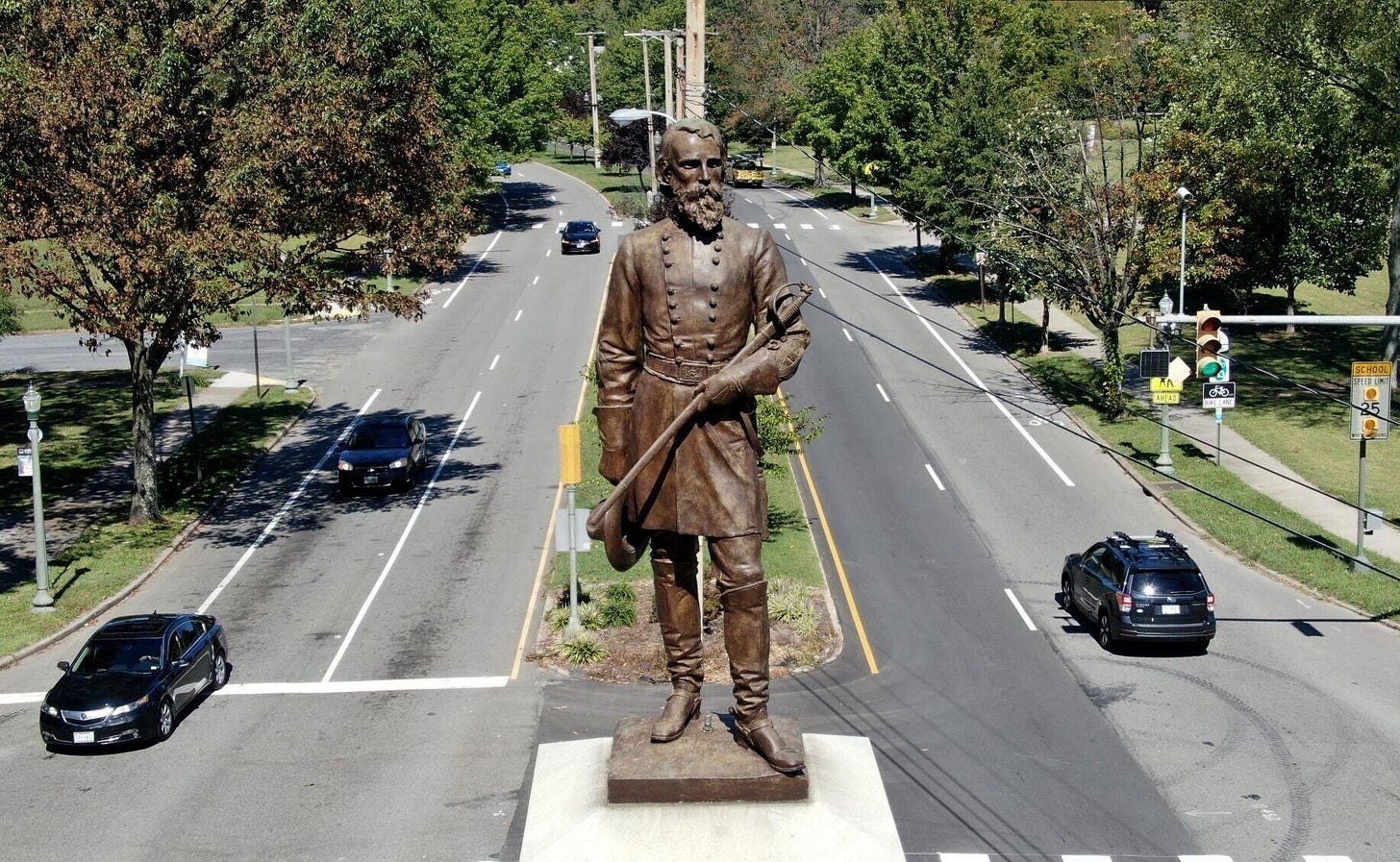Today work will begin to remove the final Confederate statue still standing within Richmond, Virginia’s city limits.1 The statue, honoring Confederate General A.P. Hill, was dedicated in 1892. Unless you are a serious student of Civil War history you probably never heard of Hill.
Hill was born in Virginia and graduated from West Point with the Class of 1847. He participated in many of the major battles in the Eastern Theater during the war, including the Seven Days, Cedar Mountain, Antietam, Chancellorsville, Gettysburg, and the Petersburg Campaign. He is best remembered for marching his famous Light Division from Harpers Ferry to Sharpsburg, Maryland on September 17, 1862, arriving on the field at a critical moment to repulse a Union assault.
On April 2, 1865—just one week before the Army of Northern Virginia surrendered at Appomattox Court House—Hill was killed during the Breakthrough at Petersburg. He is buried in Richmond, Virginia.
Both generals Jackson and Lee supposedly called for A.P. Hill on their deathbeds, Jackson saying, “Order A. P. Hill to prepare for action,” and Lee saying, “Tell Hill he must come up!”
Despite these final words from his superior commanders, Hill’s military record during the war was mixed. He was a tough fighter who ultimately gave his life for a nation committed to protecting and expanding the institution of slavery.
Complicating the statue’s removal has been the fact that Hill’s remains are buried on site. His remains were relocated three times, most notably for a time in Richmond’s Hollywood Cemetery.
Recently it was decided to remove his remains to a cemetery in Culpeper, while a pending lawsuit will determine the future of the statue itself. Descendants would like to transfer it to a battlefield in Culpeper, while the city intends to donate it to a Black history museum, where a statue of Jefferson Davis is currently on display.
Since the summer of 2020 Richmond has completely transformed its monument landscape. The monuments that once lined its avenues and dominated its cityscape are no more. As someone who has spent many hours studying these monuments and leading tours to help people better understand their history and how they fit into our broader memory of the Civil War, I still find it difficult to imagine these empty spaces.
In 2017 I wrote a piece for Smithsonian magazine in which I suggested that Richmond would be able to continue to enrich its monument landscape with new heroes and stories without having to remove its Confederate monuments.
I could not have been more mistaken.
Here is a quick recap of how we got here:
Williams C. Wickham statue (June 6, 2020)
Jefferson Davis monument (June 9, 2020)
Stonewall Jackson monument (July 1, 2020)
Matthew Fontaine Maury monument (July 2, 2020)
J.E.B. Stuart monument (July 7, 2020)
Soldiers and Sailors monument (July 8, 2020)
Joseph Bryan statue (July 9, 2020)
Stephen Lee statue (July 9, 2020)
Robert E. Lee statue—state capitol building (July 24, 2020)
Robert E. Lee monument (September 8, 2021)
Today’s removal is also another nail in the coffin for the Confederate heritage community generally and specifically in Richmond. In 2011 The Virginia Flaggers organized to protest the removal of a Confederate battle flag in front of a chapel on the grounds of the Virginia Museum of Fine Arts. They were determined to see the flag returned and to defend against any additional ‘heritage violations.’
Instead, it’s been one humiliating defeat after another—the kind of defeat that only a Confederate soldier could appreciate.
A statue of Thomas J. “Stonewall” Jackson still stands in Capitol Square in Richmond on state property. Its future is unknown.





Down with the traitors, and up with the flag!
Hurrah!!!